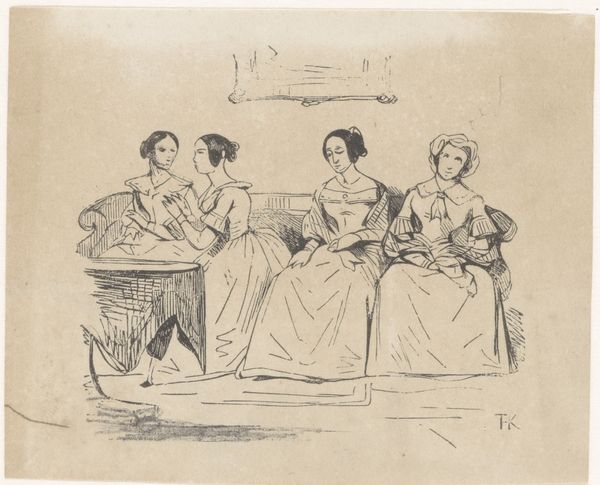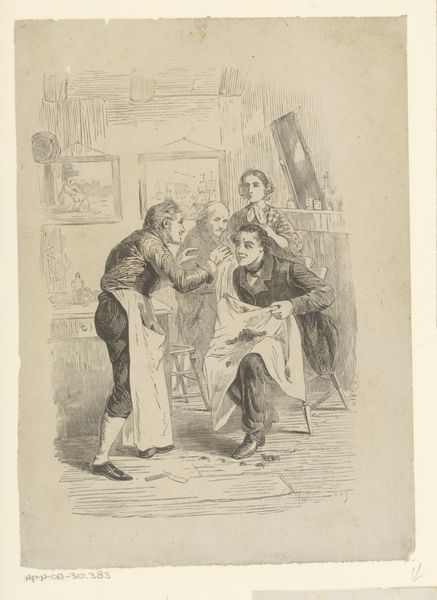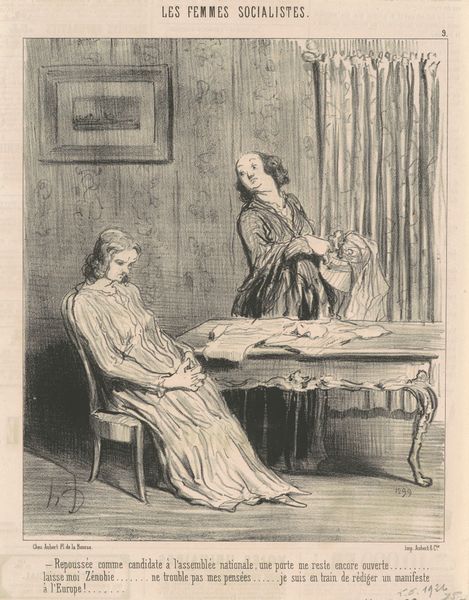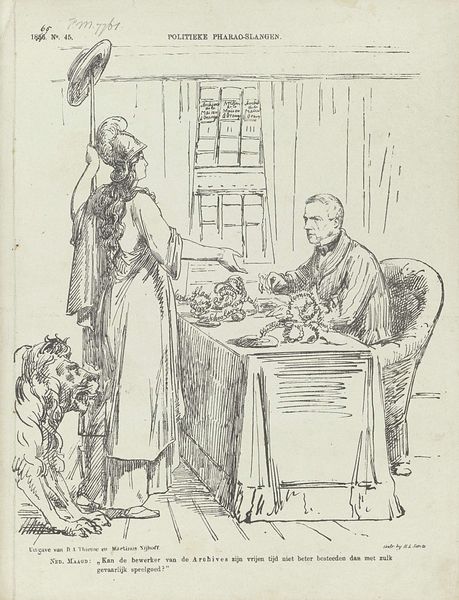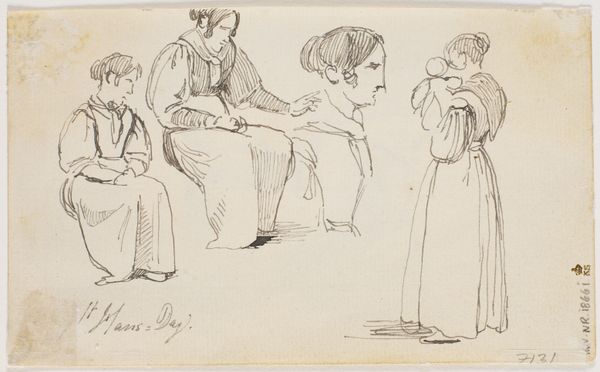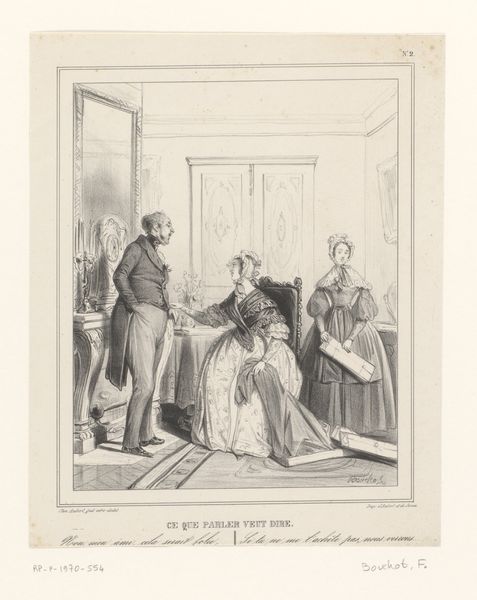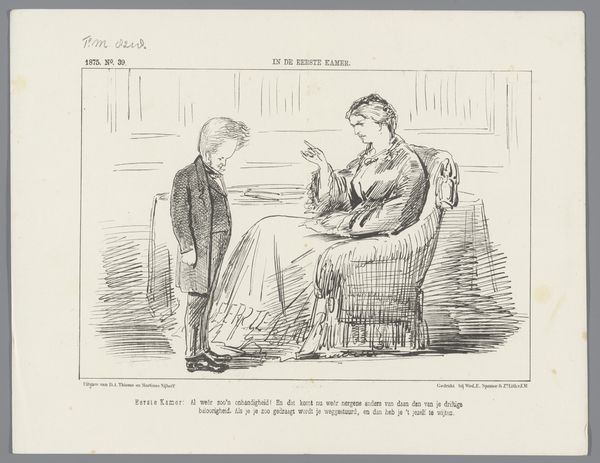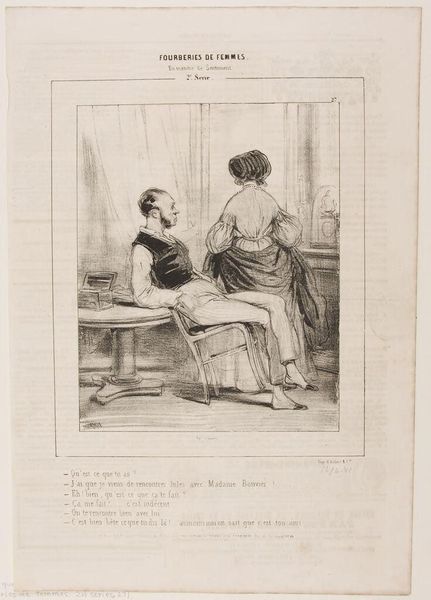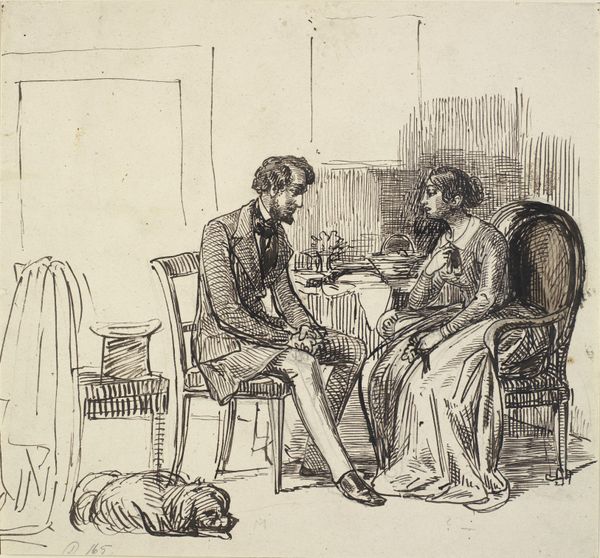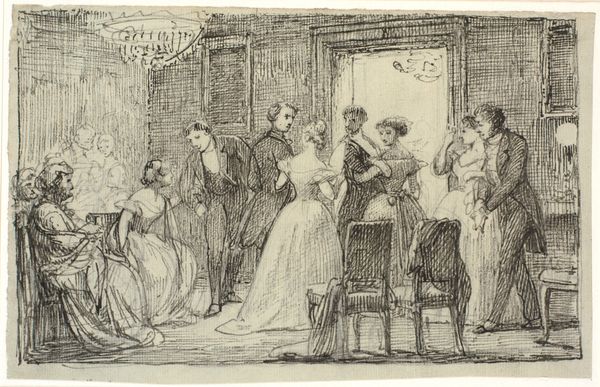
Spotprent over een aanstootgevende passage in het boek Klaasje Zevenster, 1866 1866
0:00
0:00
Dimensions: height 215 mm, width 275 mm
Copyright: Rijks Museum: Open Domain
Editor: This is "Spotprent over een aanstootgevende passage in het boek Klaasje Zevenster, 1866," a pen drawing by Johan Michaël Schmidt Crans. The scene feels very domestic, but there’s a tension in the air – a man smoking, two women seemingly in disagreement over a book. How do you interpret this work, given its historical context? Curator: It's fascinating to consider this image within the context of 19th-century social norms. We see a clear depiction of gender roles: the man is passive, the women are engaged with literature, perhaps challenging those very roles. Note the Dutch title referring to an offensive passage and the Italian quote from Dante – do you think this clash of language hints at something deeper? Editor: Maybe it’s a commentary on societal expectations clashing with personal expression? The woman being confronted looks rather upset. Curator: Exactly. The art is arguing there's a conversation to be had here, both literally with the book being read aloud, but more subtly about female agency. Who gets to determine what is "offensive"? Where do lines of morality lie, particularly within domestic spaces? The drawing is prompting us to consider how literature can incite, or at least reflect, social change. How does Romanticism fit into this critique? Editor: Perhaps the exaggerated emotions depicted and the focus on individual feeling underscores the inherent conflict between societal constraints and individual liberty, themes so present in Romanticism. Curator: Precisely. So, it’s a small sketch, but brimming with commentary on gender, power, and the revolutionary potential of art and literature. The Italian alongside the Dutch points at these being tensions within and without national identities. Editor: That’s a really helpful perspective. I see how looking at its social context makes the drawing much more powerful. Curator: Agreed! Analyzing art in the frame of social commentary makes visible underlying cultural debates and ideological clashes.
Comments
No comments
Be the first to comment and join the conversation on the ultimate creative platform.

